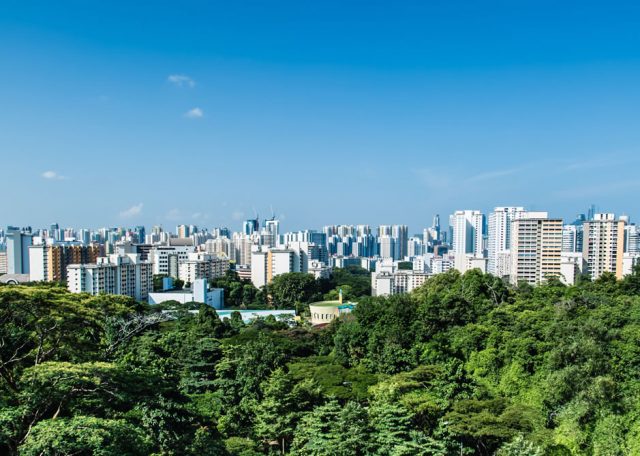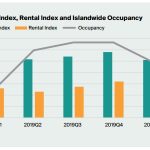More than a month into Circuit Breaker, real estate transactions push on steadily
The circuit breaker may soon come to an end, with businesses preparing for recovery in the weeks leading up to 2 June 2020. Knight Frank does a stocktake of how the real estate market has fared during the circuit breaker.
Despite the closure of showflats and restrictions on physical interactions limiting in-person viewings of properties, there were real estate transactions on the private residential front, with 286 caveats registered between 7 April and 30 April 2020.
Table of Contents
Real estate transactions are up because properties hold perennial value
Linda Chern, Head, Project Marketing, Prime Sales & Leasing, Residential, Knight Frank Singapore, shares, “Real estate may be down, but it’s definitely not out. A slower market can give buyers more time to make better, considered options before they make a decision on a property purchase. This could be why homebuyers are still actively seeking and buying properties, be it for investment or simply to have a new home to stay in. Real estate is a necessity that holds perennial value regardless of the economic situation.”
Real estate transactions expected to remain steady with participation from UHNWI
The continued residential activity points to property being the asset class of choice amongst Ultra High Net Worth Individuals (UHNWIs) for wealth preservation. According to the Attitudes Survey in The Wealth Report 2020, Singapore emerged as the third most popular destination for buying homes amongst Asian investors, behind the traditional markets of US and UK. Investment property is the most popular asset class among Singaporean UHNWIs, with some 40% intending to increase their allocations to real estate. Real estate investments presently account for 40% of UHNWIs’ current allocations.
The market demand for real estate continued even before circuit breaker measures began, as attractive, right-priced projects drew homebuyers and investors amid the downturn. Leonard Tay, Head, Research, Knight Frank Singapore observes, “Notwithstanding the immediate impact of the social and economic restrictions on sales volume, slightly over half of sales for the month was sold during the week before the circuit breaker kicked in, out of the 581 caveats lodged for residential real estate transactions in April.
“Subsequently, lower numbers may have trended during the circuit breaker period, but the figures signal that it is possible to sell and purchase private homes, in spite of the restrictions.”
Asia’s population of ultra-high-net-worth individuals (UHNWIs) – those with a net worth of US$30 million or more – expanding at a rate that outpaces most other world regions last year, according to Knight Frank’s Wealth Report 2020.
In 2019, Asia topped a league table of the world’s fastest growth of UHNWIs, dominating 7 out of the top ten places with an estimated increase of 11,800 UHNWIs – up 13% – bringing the total population in the region to 103,000 individuals. North America, where the largest proportion of world’s wealthiest population reside, registered a 6% increase in UHNWIs last year, while Europe saw its position lag at 4%.
| Ranking | UHNWI Market | 2018-2019 Growth Rate |
| 1 | South Korea | 22% |
| 2 | Italy | 21% |
| 3 | Japan | 17% |
| 4 | Nigeria | 15% |
| 5 | China | 15% |
| 6 | Egypt | 14% |
| 7 | Taiwan | 14% |
| 8 | Singapore | 10% |
| 9 | Philippines | 9% |
| 10 | Thailand | 9% |
Source: Wealth Report 2020

The Wealth Report 2020 says ultra-high-net-worth individuals investment strategies may offset the effects of the global economic slowdown
Despite its smaller population and higher base, Singapore witnessed one of the ten highest growth rates of UHNWIs in the world, from 2018 to 2019. The local growth of UHNWIs came as more UHNWIs were drawn to the Singapore’s liveability, as they set up base in the country for business.
Additionally, UHNWIs are attracted to Singapore’s potential for investment, as well as its lifestyle. According to Knight Frank’s City Wealth Index, Singapore ranked 5th globally when considering lifestyle factors and 10th when it came to investments. Notwithstanding, the vibrant start-up scene locally has also given rise to a new wave of UHNWIs.
UHNWI growth from 2019 to 2024
Looking ahead, the growth rate of UHNWIs in South-East Asia is projected to be one of the highest in the world. Out of the top twelve fastest growing UHNWI markets, four come from South-East Asia, with expected growth rates of around 30% or more. One reason for the strong, anticipated growth is the rise of disruptive business models created through technology, and abundant capital. As a gateway city and regional hub, Singapore is primed to benefit from neighbouring growth of UHNWIs as well.
| Ranking | UHNWI Market | 2019-2024 Growth Rate |
| 1 | India | 73% |
| 2 | Egypt | 66% |
| 3 | Vietnam | 64% |
| 4 | China | 58% |
| 5 | Indonesia | 57% |
| 6 | Tanzania | 54% |
| 7 | Sweden | 47% |
| 8 | Romania | 42% |
| 9 | New Zealand | 37% |
| 10 | Malaysia | 35% |
| 11 | United Kingdom | 31% |
| 12 = | Singapore | 29% |
| 12 = | Poland | 29% |
Source: Wealth Report 2020
Ultra-high-net-worth individuals investment strategies nurtures budding start-ups or social enterprises
Ian Loh, Head of Investment and Capital Markets (Land, Building & Collective Sales), Knight Frank Singapore, says, “The projected growth rate of UHNWIs in South-East Asia will increase the number of family offices set up in Singapore, given the attractiveness of the investment schemes available and the robust and transparent legal structure. This is especially so as the government looks towards enhancing Singapore’s competitiveness as a wealth hub.
“Besides investing in new business opportunities to help nurture budding start-ups or social enterprises, these family offices are also likely to seek assets that offer stable yields, such as office properties in the CBD or shophouses.”
The Wealth Report 2020 says ultra-high-net-worth individuals investment strategies may offset the effects of the global economic slowdown
Ultra High Net Worth Individuals (UHNWIs) in Singapore are planning to alter their 2020 investing strategies to offset the effects of the global economic slowdown, political upheaval and negative rates, according to The Wealth Report 2020.
In the Attitudes Survey* of 620 wealth advisors managing approximately US$3.3 trillion on behalf of UHNWIs across the globe, 100% of Singaporean respondents indicated that they were actively making changes to their clients’ investing strategies, outstripping the regional average (72%), and the global average (79%).
The year 2019 was a positive year for Singaporean UHNWIs, with 71% stating their wealth had increased, slightly outstripping the regional and global averages. They appear to be more muted about the year ahead, largely due to global political and economic challenges rather than domestic, with 53% expecting their wealth to increase in 2020.
Singaporean ultra-high-net-worth individuals investment strategies will include homes
The Wealth Report 2020 also reveals that about one in four Singaporean UHNWIs will buy a new home in 2020, outstripping the global average of about one in five. The main drivers for purchases are to upgrade their main residence, for their children’s education, or for business purposes. The most popular locations, other than Singapore, are the UK, Australia and US, wealth mangers say.
Wendy Tang, Group Managing Director, Knight Frank Singapore, shares, “Many HNWIs are attracted to Singapore’s safety, world-class infrastructure and education, stable political environment and pro-business government. Prime residential properties in Singapore have continuously proven to be one of the top asset classes for wealth preservation.
“Additionally, Singapore is the third most popular destination for buying homes amongst Asian investors, behind the traditional markets of US and UK. The country registered a 10% growth rate in UHNWI individuals from 2018 to 2019, ranking eighth among the top 10 countries that saw the highest surge in UHNWI numbers.”





